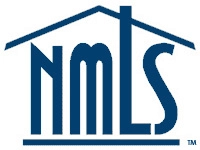Down payment assistance (DPA)
Down payment assistance (DPA) programs are initiatives aimed at helping individuals overcome the hurdle of affording the upfront costs associated with purchasing a home. These programs provide financial aid to cover part or all of the down payment and sometimes closing costs, making homeownership more accessible, particularly for first-time buyers or those with limited financial resources.
DPA programs can be offered by various entities, including government agencies, non-profit organizations, and sometimes private lenders. They typically come in the form of grants, loans, or tax credits, each with its own terms and conditions. Some programs provide funds that do not need to be repaid, while others offer loans with low interest rates or deferred repayment options.
Eligibility criteria for DPA programs vary widely and may include factors such as income level, credit score, homeownership status (first-time buyer or not), and property location. Applicants often need to complete homeownership education courses as part of the program requirements.
Researching and understanding the specific DPA programs available in your area, along with their requirements and limitations, is crucial for potential homebuyers. Consulting with a knowledgeable mortgage lender or housing counselor can also be beneficial in navigating these programs and finding the best fit for your circumstances.
There are several types of down payment assistance (DPA) programs available to help homebuyers cover the upfront costs associated with purchasing a home. Here are some common types:
- Grants: These are funds provided by government agencies, non-profit organizations, or other entities that do not need to be repaid. Grants are typically awarded based on financial need and may cover part or all of the down payment and/or closing costs.
- Forgivable Loans: Some DPA programs offer loans that are forgivable under certain conditions, such as living in the home for a specified period of time. If the borrower meets the program’s requirements, the loan is forgiven, meaning it does not need to be repaid.
- Deferred Payment Loans: These are loans that allow homebuyers to postpone repayment until a later date, typically when the home is sold, refinanced, or paid off. Deferred payment loans may have low or zero interest rates, making them more affordable for borrowers.
- Low-Interest Loans: DPA programs may offer loans with below-market interest rates to help homebuyers afford the down payment and closing costs. These loans can significantly reduce the financial burden on borrowers compared to traditional loans.
- Soft Second Mortgages: In this type of DPA program, the borrower receives a second mortgage with favorable terms, such as low or zero interest rates, to cover part or all of the down payment. The second mortgage is subordinate to the primary mortgage and may have repayment terms that are more flexible than traditional loans.
These are just a few examples of the types of down payment assistance programs available. The specific options and eligibility criteria vary depending on the location, funding sources, and program administrators. It’s essential for homebuyers to research and understand the DPA programs available in their area to determine which option best suits their needs and financial situation.














